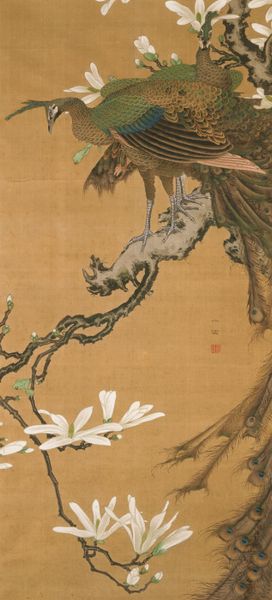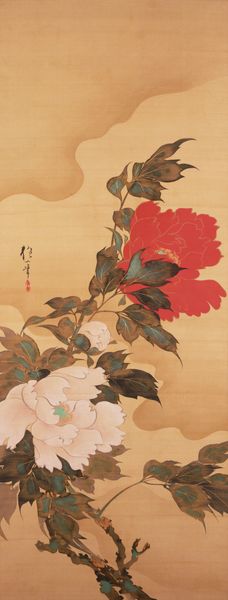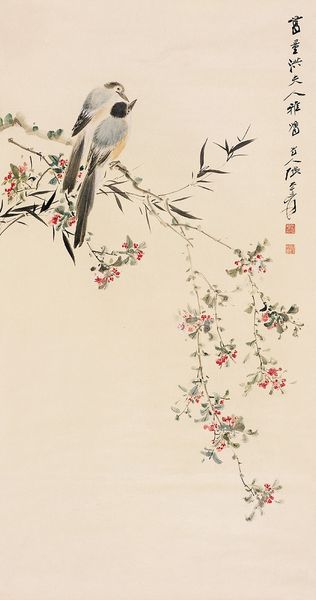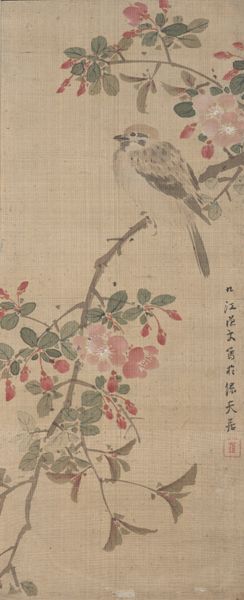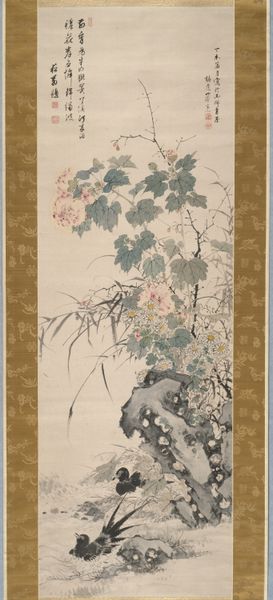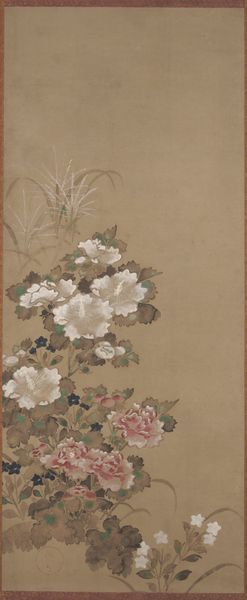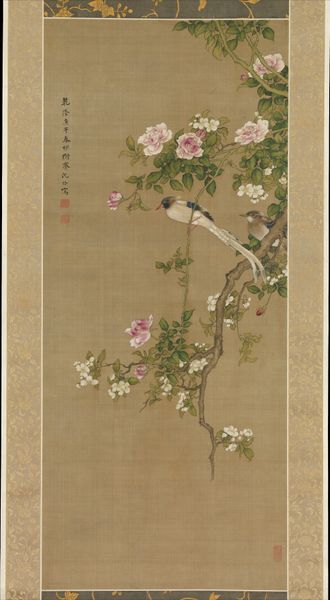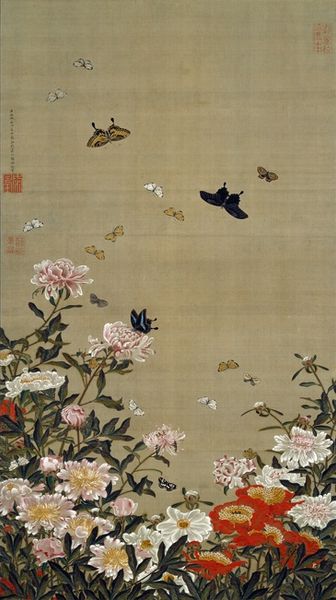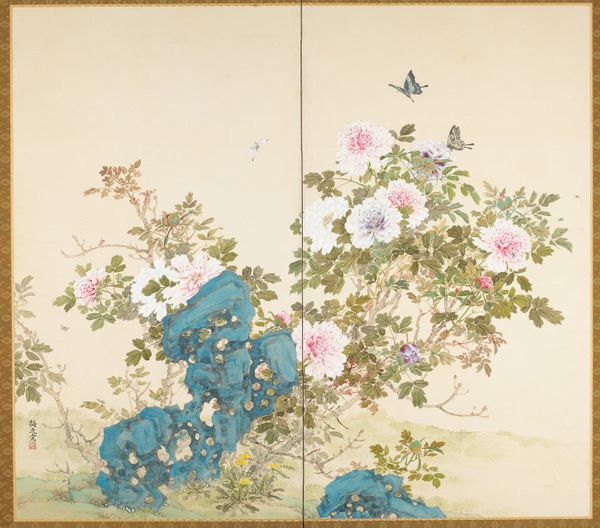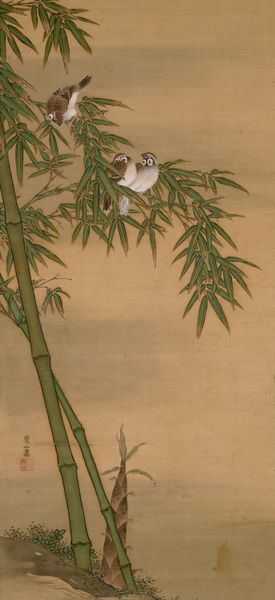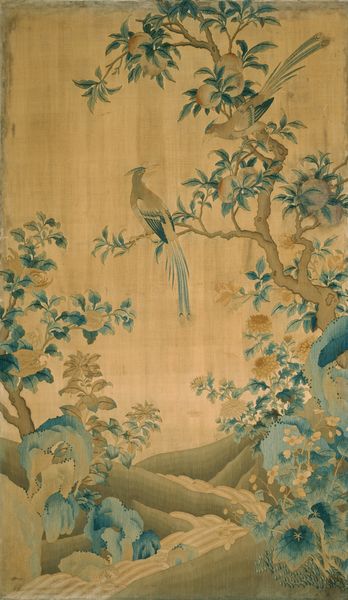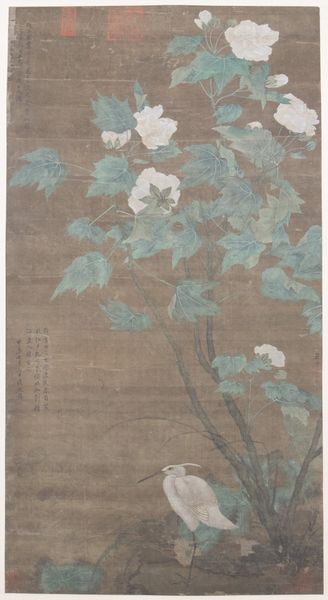
painting, watercolor, hanging-scroll, ink
#
water colours
#
painting
#
asian-art
#
landscape
#
japan
#
watercolor
#
hanging-scroll
#
ink
#
watercolor
Dimensions: 39 7/8 × 14 1/4 in. (101.28 × 36.2 cm) (image)79 1/2 × 21 3/8 in. (201.93 × 54.29 cm) (mount, without roller)
Copyright: Public Domain
Curator: Mihata Jōryū’s hanging scroll, “Red Parakeet,” circa 1830s. It’s rendered in ink and watercolors on paper. A lovely piece here at the Minneapolis Institute of Art. What’s your initial take? Editor: Well, that red bird really pops. There’s a vibrant contrast between it and the pale magnolias. It has an unusual visual weight. Curator: Mihata was really skilled in rendering lifelike plumage with watercolors, although he seems more focused on its marketability within the context of the bird-and-flower genre, kachōga. Editor: Interesting. What I see immediately is how the artist uses the parakeet as a symbol, likely a reference to the exotic or foreign. It contrasts with more native symbols of rebirth represented by the magnolia blossoms. Curator: The red coloring of the parakeet would require expensive pigments for the watercoloring process at the time, showing the financial resources accessible for the creation and distribution. But it still had to fit into this long tradition of paintings appreciated by scholars and the upper class. Editor: Exactly. This isn't just about pretty colours. The contrast is symbolic: the magnolia is tied to spring, renewal, even immortality in some East Asian traditions. The bold presence of the parakeet interrupts and perhaps transforms that traditional understanding of those natural images. It makes it an unusual piece of Asian art to say the least. Curator: It is also how that contrast plays with a Japanese consumer culture rapidly openning itself to Western art in the period. The demand for particular, skilled renditions played a significant part in how the work looks in front of us, and even it's own survival. Editor: The more I look at it, the more that tension between tradition and transformation resonates. I wonder about the identity the patron and the viewers hoped to acquire by interacting with this work of art, given the presence of something quite foreign alongside the local symbolism. Curator: An appropriate wonder, to finish on. Editor: Indeed, thank you for your material and market insights on it all.
Comments
No comments
Be the first to comment and join the conversation on the ultimate creative platform.
